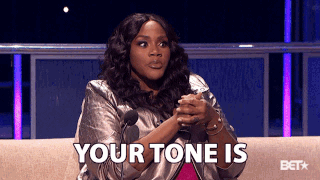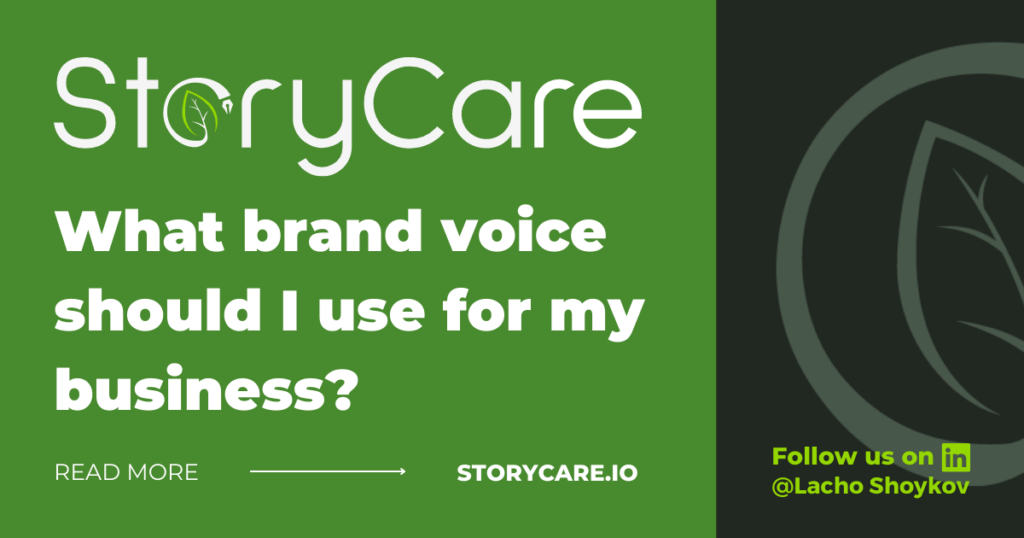What brand voice should I use for my business?
How your brand sounds can be just as important as how it looks. All top-tier brands have a unique voice that differentiates them from their competitors. Perhaps even more important, a brand voice helps your audience understand what to expect. In its purest form, your voice should help communicate your company’s mission and core values. So how do you determine which is best for your brand?
In this article:
Table of Contents
What is a Brand Voice?

A brand voice is how you consistently deliver your message to your brand’s audience. It is a part of your broader brand identity and helps make an impression of what your brand is about.
The best voice is the one that resonates with your ideal customers. Nike’s slogan ‘Just do it’ is perfect for resonating with sports enthusiasts. Coca-Cola’s ‘Taste the feeling’ is excellent for drink lovers. Tiffany’s ‘Beautiful design makes a beautiful life’ communicates the company’s essence of selling luxury jewelry to a high-end clientele.
But the slogan is just the tip of your brand voice. Every time your brand interacts with your customers, you should ensure consistency in your messaging. For example, if you use a corporate tone one day and a casual style the next, you may appear insincere or fake.
Naturally, as your brand grows, it might undergo significant changes that force it to change its tone, and that’s alright. However, the bigger you become, the more critical brand voice consistency becomes.
How to create the ideal brand voice for your brand?

Creating a brand voice is simple but only sometimes easy. The hard part is in eliminating all the wrong and good enough options and stripping away what you want from what is. For example, you may want to sound cool and funny, but that won’t fly if you are in the funeral business.
On the other hand, you need to choose an authentic voice. Otherwise, you will put on a mask every time you interact with your business. If your voice conflicts with your values, you will be miserable and likely drive away potential customers.
Ideally, your business should reflect your internal values, and your brand voice should help you communicate them and attract like-minded people.
Start with ‘Why’

It would be best to narrow down who you are, what you are doing, and why in one sentence. Defining what you are not is equally important as choosing what you are.
Depending on the age of your target audience, you will have a few seconds to a minute to let them know why you exist and how you can make their life better in some meaningful way.
The right brand voice for you will always be related to your brand’s mission. You have to differentiate yourself from competitors, but don’t overdo it.
People have certain expectations, and you must at least partly meet them. For example, would you trust a surgeon or an engineer strictly based on their sense of humor or a stand-up comedian based on their corporate tone?
Use your favorite clients to create a buyer persona.

Any monologue might sound good in your head. However, a dialogue, even with an imaginary persona, can help you improve your messaging significantly.
Conversing with others is our natural form of communication and is also essential in formulating our thoughts.
Who are your favorite three clients? How have they benefitted from your service, and what problems did you solve for them? Use them as a prototype for your buyer persona to make it as human and realistic as possible.
In the best-case scenario, you can ask your clients directly. The second best would be to create a persona based on them and interview it to the best of your ability.
What messages would resonate with your new persona? What motivates them? How are their problems different than other people’s? What is preventing them from solving them, and how can you help?
Talking with your clients or your imaginary persona will help you nail your business’s essence, which you should capture within your brand voice.
Create a template for your brand voice
Lastly, you need to bring your voice into the real world and ensure everyone on your team is aware of it. Outline the dos and don’ts and the core characteristics of your voice.
| Voice Characteristics | Description (What) | Do | Don’t |
| Authoritative | We have a deep understanding of the client’s problems and can always help them find the solution that is ideal for them. | Help the client feel respected and supported. Use more formal language, give credit to their achievements. | Make clients feel bad or inadequate. Create so much distance you lose the human interaction. |
| Reliable | Our clients can trust our service no matter what happens. | Let our clients know about the precise features of our service. | Use vague language. |
| Helpful | We want to provide customers with accurate, relevant, and up-to-date information. | Link to several sources, include step by step advice, acknowledge real life potential problems. | Ignore real challenges, waste their time with fluff, leave them with only one option. |
In the end, your table should communicate the general spirit of your voice and potentially tactical details or methodologies you want your creative teams to follow.
Final Thoughts on Brand Voice

Your brand voice may be just a whisper when you are starting, but over time, it can become a recognizable roar as your business grows. A brand voice is a critical part of your brand’s identity. It’s always best to figure out exactly what your brand is about and make your identity related to how you add value to the life of your prospects. If you need help, copywriters are excellently suited to help you out with your brand identity.


